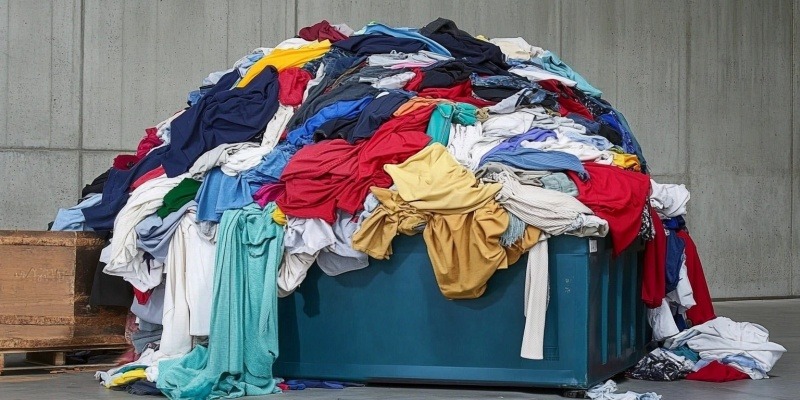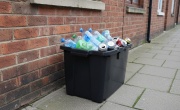WRAP warns of looming collapse in UK used textiles sector
Environmental NGO warns that unsustainable losses could place a £64 million burden on local authorities, charities, and consumers if struggling industry fails.
 The UK’s used textiles sector is operating at an unsustainable financial loss, environmental action NGO the Waste and Resources Action Programme (WRAP) has warned.
The UK’s used textiles sector is operating at an unsustainable financial loss, environmental action NGO the Waste and Resources Action Programme (WRAP) has warned.
The ‘Transitioning to a UK Circular Textiles Ecosystem Report’ goes further to argue that, with most businesses in the industry already running at a deficit, the sector faces collapse.
WRAP predicts local authorities would face an additional £64 million per year in disposal fees should the UK lose its textile reuse sector, a financial burden that would ultimately be passed to taxpayers through increased council tax.
Beyond the financial impacts, WRAP warns that a sector collapse would cause immediate environmental damage, with an increase of approximately 2.5 million tonnes of carbon dioxide equivalent each year due to more textiles being sent to landfill and incineration.
Why is the used textile sector struggling?
The report identifies several factors driving the UK’s used textiles industry towards potential collapse. Sorters are currently losing between £350 and £430 for every tonne of non-reusable textiles (NRTs) they process. With 206,000 tonnes sorted annually, this results in approximately £88 million in industry losses each year.
These financial losses were previously offset by revenue from reusable items, but this income stream has diminished significantly. The market is now saturated with fast fashion products, which often lack sufficient resale value and are unsuitable for recycling due to mixed fibre compositions, non-removeable trims like zips and sequins, and contamination.
At the same time, the sector is grappling with external pressures. Geopolitical instability, particularly the disruption of trade routes through the Red Sea, has increased shipping costs and delayed the movement of goods.
This has compounded the challenges for UK exporters who rely on established trade routes to overseas sorting and resale markets. In key destination countries across Africa and Asia, rising import duties, currency devaluation, and local market saturation have driven down demand and resale prices.
Industry bodies have already sounded the alarm. The Textile Recycling Association (TRA), which represents over 75 per cent of the sector, warned in 2024 of an imminent collapse.
Financial pressures mounting on councils
The report suggests that local authorities already pay £73 million each year in gate fees to dispose of textiles that end up in general waste bins - mostly through incineration and landfill. If the used textiles sector collapses and all collection routes are lost, these costs would rise dramatically as more material is diverted to already stretched waste systems.
Without intervention, WRAP projects costs could rise to £200 million per year by 2035 if councils become solely responsible for managing textile waste. This projection assumes textile waste volumes increase at the current rate, and no additional funding mechanisms like Extended Producer Responsibility (EPR) are introduced.
These estimates include not just the cost of disposing of textiles in landfill and energy-from-waste facilities, but also the loss of low-cost reuse routes such as collection banks and charity partnerships.
Catherine David, incoming CEO at WRAP, commented: “The charity sector plays a vital role in enabling a circular economy for fashion in the UK – a role it has been playing for over a hundred years.
“The sector now faces a crisis, with storage rooms up and down the country bursting with unsellable stock that collectors refuse to take. The knock-on effects of this are huge, with charities struggling to generate revenue, and the circular economy for clothes grinding to a halt.”
WRAP proposes three-pronged solution
WRAP has identified three interconnected solutions that could help the industry and ensure used clothing is not wasted: automatic sorting, EPR, and redesigned retailer take-back schemes.
The first solution is to scale up advanced sorting and pre-processing infrastructure, capable of identifying and separating non-reusable textiles (NRTs) for fibre-to-fibre recycling. New automated facilities could reduce the costs of manual sorting and provide consistent, high-quality feedstock for recyclers.
The organisation's Automatic-sorting for Circularity in Textiles project (ACT UK) aimed to establish a blueprint for innovative advanced sorting and pre-processing facilities. During collection trials, up to 46 per cent more textiles were collected when the public was given an opportunity to donate worn-out textiles alongside reusable items.
"Non-reusable textiles are not waste, they are resources. Through automated sorting and pre-processing for recycling, these resources will replace the use of virgin materials in textile production," said Cyndi Rhoades, Co-Founder and CEO of Circle-8 Textile Ecosystems.
The second recommendation calls for a mandatory, eco-modulated EPR scheme for textiles. This would place responsibility for end-of-life management on producers, incentivising more sustainable design and helping fund the infrastructure needed for sorting and recycling.
Eco-modulation would reward producers who design garments with recyclability and durability in mind, while penalising those using non-recyclable materials.
Third, the report urges overhaul of retailer take-back schemes, many of which currently lack transparency, consistency, or sufficient impact. It proposes a new national framework for collaboration between brands, collectors, and sorters to design more effective systems for recovering both reusable and recyclable textiles.
This would include shared standards, performance tracking, and citizen engagement to increase participation.
David concluded: “There is a way out of this mess – we call on the sector to join us in realising the vision recommended in this report, and to work together towards creating a circular economy for textiles through ACT UK.”








